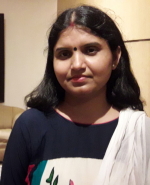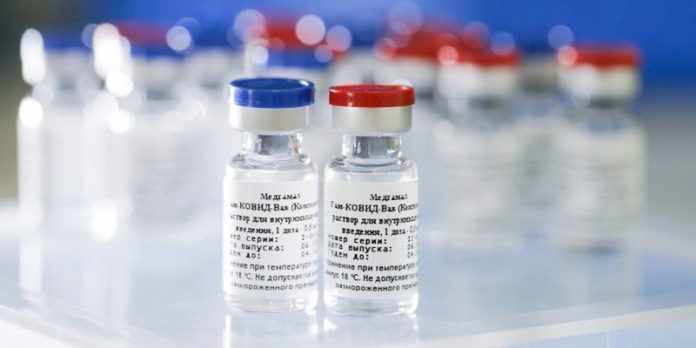Only 1 per cent of population in low-income countries vaccinated; in high-income nations, the figure is 48.3 per cent – say experts at CSE-Down To Earth global webinar
The vaccination drive to combat Covid-19 is one of the most anticipated events of our times, but severe vaccine “apartheid” and inequity across the world is threatening to derail the fight against the virus – said experts speaking at a global webinar here today.
Covid-19 has already infected 184,572,371 people globally and claimed 3,997,640 lives. A mere 24.7 per cent of the world population has received at least one dose till date. However, most of these doses have been hogged by the rich countries.
At the webinar on ‘Vaccines for all’, some of the world’s top experts came together to examine the race between the virus, its variants and vaccines, and the question of inequity. The webinar was addressed by Soumya Swaminathan, chief scientist, World Health Organization; Shabir A Madhi, professor of vaccinology and dean, Faculty of Health Sciences, University of Witwatersrand, South Africa; Leena Menghaney, regional head (South Asia), Access Campaign for Medicines Sans Frontiers; and Vibha Varshney, associate editor, Down To Earth. CSE director general Dr. Sunita Narain anchored the discussions.
Speaking at the webinar, Sunita Narain pointed out: “As early as April 2020, COVID-19 Vaccines Global Access or COVAX, an alliance between WHO, GAVI, the Vaccine Alliance and Coalition for Epidemic Preparedness Innovations, was set up to accelerate the development and production of and equitable access to vaccines. Yet, a year later, shortages and inequitable distribution of doses threatens to derail this largest vaccination campaign the world has ever seen.”
Gross inequity
For an estimated global adult population of 5.5 billion, 11 billion vaccine doses are needed. Of this, 3.32 billion doses have already been administered. “The industry seems to have promised overambitious production numbers without actually setting its house in order. The unavailability of enough raw materials is likely to make matters worse,” says Vibha Varshney.
About 48.3 per cent of people in high-income countries have been vaccinated. The percentage drops to 33.8, 13.2 and a mere 1 per cent in middle-income, lower-middle income and low-income countries, respectively.
Under COVAX (with 180 participating countries) rich countries pay for vaccines, and 92 low- and middle-income countries are subsidised. Serum Institute of India (SII) has to provide one billion of the doses under COVAX. The initiative has been facing acute shortfall after SII slipped on the delivery timeline because of a surge in cases in India.
COVAX has also been criticised for allocating vaccines in proportion to population sizes, which is not the best public health metric. As a result, it has short-changed nations in desperate need of vaccines, while providing it to others that have comparatively fewer cases. The alliance also does not consider countries’ capacities to roll out massive immunisation campaigns,” says Down To Earth in a report it has published earlier.
What the WHO is saying – Soumya Swaminathan
Speaking at the webinar, Swaminathan pointed out that the ongoing spike in many countries is worrying mainly because the cases of Delta variant are rising sharply. “There had been a hope that the number of daily deaths will decrease, but they have been increasing as well,” she said.
Swaminathan said COVAX has mobilized significant amount of resources and access to the vaccines, but due to supply considerations, most of the roll-out is now going to happen in the last quarter of 2021. She also listed some of the reasons for the relatively slow uptake of the vaccines — lack of knowledge and information, operational issues, and apprehensions about vaccination, among others.
“WHO’s initial 20 per cent goal of vaccine coverage was aimed at covering the vulnerable in each country, the idea being that healthcare and frontline workers and the elderly should be covered so that the mortality rate is brought down. The goal has now been revised to 40 per cent coverage in each country by the end of this year, and 70 per cent by the middle of the next year,” she said.
Swaminathan thinks the big challenge in vaccine research is “the need for well-designed effectiveness trials in multiple countries”. The only way to increase supplies right now, according to her, is dose-sharing by countries that have already vaccinated more than 40 per cent of their population.
The question of TRIPS and Big Pharma
Perhaps the biggest spanner in the works of the vaccination drive are powerful multinational pharmaceutical companies encouraged by prevaricating governments of high-income countries. Big Pharma is not willing to part with scientific know-how on the vaccines. They are protected by World Trade Organisation (WTO)’s strict trade-related intellectual property rights (TRIPS). While it is true that many developing nations do not have the capacity to manufacture vaccines, even those that do are seriously hampered by TRIPS.
“When COVAX was set up, the world’s richest countries went ahead and donated to COVAX but then tied up supplies to themselves first. The disparity in access that we see today is the direct result of this strategy,” said Leena Menghaney, speaking at the webinar.
Developed countries could do this because of concentration of manufacturing in these geographical location and control of manufacturing through a variety of business strategies including IPR, says Menghaney.
COVAX can procure only WHO-approved vaccines, explained Varshney. The UN agency has given a nod to just six of the 17 vaccines that are being administered in different countries across the world. Of these, Covishield, manufactured by SII, is the cheapest at around US $3 a dose. The other vaccines cost anywhere between $1 and $40, as manufacturers are selling them at different prices to different countries to maximise profits.
How is Africa faring – the Valleys of Death
In his presentation, Shabir Madhi said that cases in Africa have been grossly underreported. The continent is struggling with what has been called the two ‘Valleys of Death’. The first of these is the disease itself and its rapid spread, and the second is the unavailability of a cure or vaccine.
According to Madhi: “Only 64 per cent of the vaccines available in Africa are actually being administered. Less than 3 per cent of Africans have been vaccinated.”
He pointed out that Africa does not have much vaccine manufacturing capacity, and will have to depend on countries that have the capacity to share vaccines with it. “The virus is going to be with us for some time,” said Madhi. “Herd immunity is not going to be achieved soon. The focus should be to accelerate innovation so that high-risk individuals have access to the best treatment and care to protect them against severe disease and death.”
Vaccines for all
Says Richard Mahapatra, managing editor of Down To Earth: “The virus is rapidly mutating, multiplying variants and policy and logistic headaches. Four variants, named after the first four letters of the Greek alphabet, are already of serious concern. Many more are being observed closely. In the mad race between the virus and the vaccine, cooperation between nations and agencies will be crucial.”
“We must free technology through TRIPS waiver and COVID-19 Technology Access Pool (C-TAP), augment production facilities and promote collaborations for raw materials. We must set a system for equitable distribution via COVAX by restricting hoarding, ensuring funding and increasing transparency. Vaccines must be provided free of cost and their access and delivery rate should be increased. Promotion of pandemic-appropriate behaviour to control spread needs to be continued. Only then can we hope to beat the pandemic,” says Varshney.
Said webinar anchor Dr. Sunita Narain: “The virus has been a great equalizer and we must learn our lessons from it. It is impossible to try to compartmentalise our responses to a pandemic of this magnitude and scale. It will continue to be a threat as long as we don’t truly unite against it, rising over national and corporate interests. No one is safe until everyone is safe.”

Reported by Ms. Pratyusha Mukherjee, a Senior Journalist working for BBC and other media outlets, also a special contributor to IBG News. In her illustrated career she has covered many major events and achieved International Media Award for reporting.




















